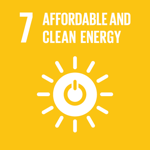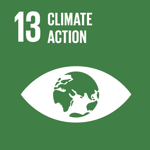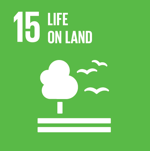Environmental Sustainability
You must have heard of climate change, energy conservation, recycling and the circular economy. But how do you think things are going? We are currently living irresponsibly at the expense of future generations. If everyone were to live like us, more than three globes would be needed to cover our consumption habits!
According to Agenda 2030, we are determined to protect the Earth from pollution through, for example, sustainable consumption and production patterns, sustainable use of natural resources, and urgent action to mitigate climate change to support the needs of present and future generations. So what does ecological sustainability mean? It means preserving biodiversity and adapting people’s economic and material activities to the natural resources and tolerance of the earth.
Ecological sustainability is the most important because it enables other dimensions of sustainable development to be realized. A person must not endanger the natural systems that sustain life: the living world, the atmosphere, the water, the earth, bedrock, and anthropogenic emissions must not exceed the carrying capacity of nature.






Climate change and ecological sustainable

Climate change is the most serious environmental problem humanity has ever faced. It is already
affecting human activities and the natural environment, and the impact will continue to increase.The impact of human activity on climate change is crucial. Catastrophic climate change can still be prevented if so desired. What kind of climate do you have? According to the Finnish Climate Panel, almost 70% of carbon dioxide emissions come from consumption, so you can really influence your consumption decisions. According to Sitra, the carbon footprint of the average Finnish consumer consists of four areas: food, exercise, living and other consumption.
Ilmasto.org has a collection of frequently asked questions about climate change. Go read the questions and answers and then test your knowledge with test questions.
Ecological resistance and living environment / terrestrial and underwater life


The living environment provides the framework for human existence. We need clean air to breathe, clean soil to grow food and clean water to drink. Forests provide a habitat for millions of species and are an important source of clean air and water. Vegetation is a major part of human diet and successful agriculture is important all over the world. Soil degradation is rapid and we are losing more cultivated land than before. Desertification is getting worse, causing problems, especially in poor countries. Animal species are extinct. Our task is to halt soil impoverishment and biodiversity loss.
The seas, with their temperatures, currents and lifestyles, in turn, maintain a system that makes the earth viable. However, alarming changes in water temperatures and flows have been observed. How can we conserve the marine resources and promote their sustainable use?
Water

97.5% of the Earth’s water is salty and 2.5% is sweet. Only 1% of the world’s fresh water is available to humans, for example, 70% of freshwater resources are found in ice or snow in the Arctic and mountains.
The use of water on Earth has increased significantly. Growth will continue as populations and industries demand increasing amounts of water. As a result, clean water is lacking, especially in Africa, Asia and the Middle East. Lack of clean water causes illness, restlessness and refugees. One reason for the lack of water is climate change. In addition, water resources are unevenly distributed across the globe. Although we have plenty of water in the Nordic countries, we consume a lot of products and food produced in areas where water is scarce. As the world needs more access to clean water, recycling and reuse of fresh water must be enhanced. Fresh water is a renewable resource, but it is renewed too slowly compared to its consumption.
Rich thoughts:
Often water saving is forgotten because we Finns have a lot of water. Even though there is plenty of water, why do we still need to save?
Can water be used in a circular economy? If so, how?
80-90% of the world’s water is consumed by agriculture. Why does agriculture use so much? It is said that in the future, clean water will not be enough for everyone. The school taught that water circulates. If water circulates once, why is it not enough for everyone?
“It is useless to save water in Finland”
Energy

Energy can be obtained. Water, wind, sun, wood and biogas are all renewable energy sources. When used sustainably, renewable energy does not stop even when it is used. However, in developing countries, more felling than growing of trees has led to the desertification of the soil.
Oil, coal and natural gas are non-renewable energy sources known as fossil fuels. They began their existence hundreds of millions of years ago when plants and small marine organisms decomposed. Non-renewable energy sources will eventually run out because there will be no more. In addition, the use of fossil fuels produces harmful emissions to the atmosphere.
Our energy consumption is worrying because 80% of the energy we use is produced from fossil fuels. As a result, emissions that accelerate the greenhouse effect have increased. It is predicted that oil will run out in 30 years, while our energy needs are projected to grow by 50% by 2030. How do we survive? There is no answer to it yet, but all means to save energy and develop new forms of energy are needed.
Ecological and responsible consumption

You are pursuing professional studies and you are in the process of becoming a professional. You have probably heard that responsibility today and in the future is a matter for the individuals as well as for working life. Individual responsibility is defined as both a human attribute and a responsibility for something or person. The word responsibility, on the other hand, is defined as the duty to take care of something, action, or person (Contemporary Dictionary, 2002.)
Corporate responsibility is defined through individual responsibility and more broadly linked to social responsibility. It is up to each company to decide what corporate responsibility means and how they act to realize their ideas of ecological responsibility, thus minimizing negative environmental impacts.
What does responsibility mean to you in your future job and profession? You can be acquainted with the site maintained by the Finnish Environment Institute Cycle and its own profession or its closest field and related environmental issues.
Consumption
We consume different things every day, but not all of it is trackable. We also consume products untracked, such as water or energy used in production. When we travel by car, the tank consumes fuel and the engine consumes oil needed to make it run. We watch TV, go to the movies or go to the indoor swimming pool. What kind of untracked and invisible consumption they have?
Where do the goods go when we no longer use them? Some will be recycled, some will be reused and some will end up in our own storage facilities, in the wild or even in landfills. Consumption of goods and services is one of the main causes of environmental problems. Did you know that the North Pacific Whirlwind has created a landfill that is twice the size of the United States? Hundreds of millions of tons of waste, mostly plastic, have been deposited on the seabed over decades.
Consumption patterns should quickly be made more sustainable, as the world’s natural resources do not withstand current consumption.
Have you ever thought that each person takes all the needed materials from nature?
How can you influence consumption and the effects of consumption?
- By studying eco-labels and making sustainable choices. Visit the Martta page for eco-labels and then test your skills in the Global Consumer Forum
- Getting to know the energy labels
- Other interesting themes:
Reilu kauppa
Älä osta mitään –päivä
Turhake
Product’s life cycle
Product life cycle refers to the various stages of a product’s existence, from the production of the raw materials to its disposal. Each stage of the life cycle consumes energy and materials, such as raw materials, tools and water. The product itself contains only a small fraction of the natural resources that are consumed during its existence.
For example, growing food causes the greatest environmental load, not cooking. The most significant environmental impact of buildings is again the use of the building, especially heating. Knowing which phase of the life cycle has the greatest environmental impacts will help you to intervene in the right things.
Services can also be viewed from a life-cycle perspective: what emissions and wastes are generated during the various stages of service delivery? Different products and services have different life cycles. Through the Climate Panel, Sitra highlighted four areas where we can influence the lifecycle of a product and thus the environmental load.
Material efficiency is one of the cornerstones of life cycle thinking. Environmental management has defined material efficiency as follows: “Material efficiency is about producing less from the environment while saving more. The aim is to minimize the use of materials, raw materials and energy. At the same time, it aims to reduce the negative environmental impact of a product or service throughout its life cycle.
Material efficiency can be improved by:
- Choosing raw materials, energy and transport modes with low lifecycle energy and material consumption.
- Streamlining production processes in the use of raw materials and energy.
- Minimizing and streamlining transportation and packaging.
- Developing product service features such as longevity, versatility, and serviceability
- Developing reusability of the product and its components
Sorting of waste
Waste management in Finland is based on the Waste Act (646/2011 §8) and thereby on a national and regional waste plan. The Waste Act is based on priority and the primary objective is to reduce waste. Where reduction is not possible, the waste shall be re-used as such. The next alternative to waste is recycling. If these measures are not feasible, the energy contained in the waste will be used for the purpose of plant combustion and the final option will be a landfill.
How can you reduce waste generating? Waste can be reduced not only by product design, but also by replacing physical products with digital or other services, and by renting, borrowing and using the products together. It is also good to think about the necessity and quality of the product, the possibilities for maintenance and repair, and the durability.
Hazardous waste must be stored in a locked area, separate from other waste, and must be kept by (type, quality, quantity, origin and destination). The transportation of hazardous waste is the responsibility of the licensed entity. Plant-based incineration is one way of utilizing waste for renewable energy, heat and electricity.
Recycling and circular economy
Do you know how waste sorting and the circular economy are related? How do the circular economy and recycling differ?
The circular economy is the same thing as reuse. The product discarded there will be reused. For example, a small piece of clothing taken to a flea market where someone else buys it. Equipment maintenance and repair is also a circular economy. In a circular economy, products have the longest possible life cycle. Durable, repairable and easily replaceable parts are used in production. This way you can maintain the product and not have to buy a brand new one when a part is broken.
Recycling, on the other hand, means that the materials of the discarded goods reused. For example, feathers materials are cut from worn-out clothes, from which carpets woven. As well as new products made from discarded metal.
However, the goods or the materials cannot be recycled unless it is sorted and delivered to a place where it can be re-used. Do you know the right sorting guidelines? It is a pity that improperly sorted waste can spoil the whole batch recovery. Do you already have ideas on how to implement a circular economy yourself?
What Happens to Your Recycling After It’s Collected? | NowThis News
